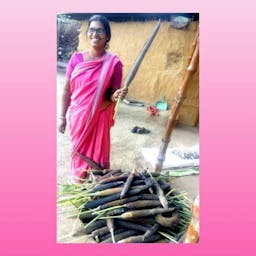Malnutrition is more an Economic than a Health problem
Jan 21, 2015
Story
There was a news report in the daily newspaper Hindustan Times Indore Live edition of 3rd Decemeber 2010 that World Health Organisation is holding an orientation programme for measles immunisation with NGOs . Is there a need for WHO to be involved directly with the immunisation programme ? Or should it instead be putting pressure on the Government of India to do this . Many of the Government departments like Women and Child Devolpment and State health departments are working in this field and claiming that infant mortality and maternal mortality rate is going down .
The reality, however, is opposite so that the Union Ministry of Health and Family Welfare Under Secretary Rekha Chauhan has been forced to state that the government was commited to making all efforts to bring qualitative and quantitative changes in health delivery mechanism across the country . This commitment gets shaped into reality through the National Health Mission.
Earlier the news had come in September 2008 that many children died due to malnutrition in Khandwa, Shivpuri, Sheopur, Satna and Jhabua Districts in Madhya Pradesh. When this news came the State government tried to deny it but the Right to Food Campaign stressed that malnutrition due to Government inaction was the cause . The first report showed that 12 children had died in 2 months in Khandwa district and 70 were in hospital . Then the government came under pressure and the administration in Indore dismissed the reports . Meanwhile State Commissioner Alka Upadhyay visited the area and examined the children with the help of doctors and sent around 85 malnourished children to hospital. After that State Women and Child Development Commissioner reached there to inspect the relief work . Then Union Women and Child Development Minister Renuka Chowdhury also said that the State Government does not admit that the children have died from malnutrition . Officials instead blamed NGOs and the Media for malnutrition woes .
Sheopur District is one of the malnutrition hotspots of the world . This observation was made by the Joint Commission of Enquiry instituted by the Commissioner for Food Security appointed by the Supreme Court of India . The SC for the first time intervened when 13 childern died in Patalgarh village in Sheorpur district in 2005 . The SC directed the district administration to set up an anganwadi and strenghthen the Public Distribution System in the village .
The infant mortality rate is high in M.P. and according to an Action Aid investigation the malnutrition rate is 69 % as against the Women and Child Devlopment Department's report that it is 52 % in M.P. Thus malnutrition is the main cause of children's death . UNICEF also involved itself to know the truth . The NGO Right to Food Campaign filed a case in M. P. High Court in this matter . The Court asked the Government to give details of the immediate and long time steps taken as regards prevention of the death of children . The State Government then came under pressure to act . Ultimately NGOs came out with a Bhopal Declaration demanding universalisation of Integrated Child Development Services . They claimed that 97,000 children under one year of age had perished in the State in the last 40 months.
However , it is not possible for ICDS to remove the malnutrition problem in the State because there is inadequate investment for health care . State Government has enacted a number of laws and policies to ensure women and child health on paper . But there is no plan to establish adequate health care centers for rural areas even after the National Rural Health Misson was constituted in 2007 . The Union Minister for Women and Child Development Krishna Tirath said that State government can't absolve itself of responsibility for the children's deaths after a sudden visit to Meghnagar in Jhabua District on April 2, 2010 . 19 children had died in Shivpuri district again on October 2010 and this despite measures reportedly taken after the earlier in 2005 .
The real problem is that there is a lack of job opportunities , drinking water and sanitation facilities , electricity supply , education system and health facilities . The people are consequently forced to migrate. As an example two lakh families migrate to Gujarat from Jhabua and Alirajpur Districts alone every year for three months after living and working in abysmal conditions . So in essence the problem of malnutrition is more an economic than a heath problem. If the government invests in provision of adequate social and development services to the poor then they will themselves be able to take care of themselves.




